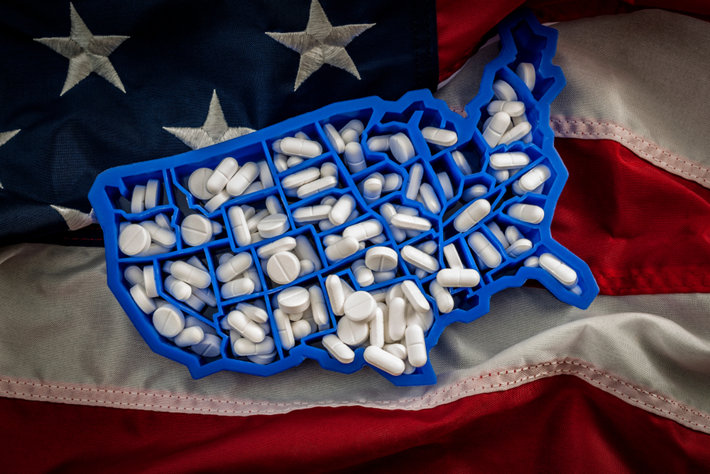Exploring a Proposed Reduction in Opioid Prescribing

Let’s talk about one of the most controversial subjects in pharmaceutical prescribing. This is the current proposal for reducing opioid prescribing to curb the opioid epidemic.
On the one hand, many people support this approach because they see opioid painkillers as a direct point of causation in creating the addiction crisis. On the other hand, there are those who oppose reducing opioid prescribing because they feel that such actions will make it more difficult for legitimate pain patients to get access to pain relief.
The U.S. Department of Health and Human Services Puts Doubt to Rest on the Source of the Opioid Epidemic
Many people want to see opioid prescribing trends reduced. They’re tired of people they know getting addicted to these drugs. And no one can deny that there is a direct connection between doctors prescribing opioids and people becoming addicted to opiates. The U.S. Department of Health and Human Services went on the record earlier in 2019 to publicly announce that:
- The late 1990s saw pharmaceutical companies “Reassuring the medical community that patients would not become addicted to opioid pain relievers and healthcare providers began to prescribe them at greater rates.”
- The early to mid-2000s saw increased prescription of opioid medications which “Led to widespread misuse of both prescription and non-prescription opioids before it became clear that these medications could indeed be highly addictive.”
Those are direct quotes from the United States Department of Health and Human Services, the U.S. government department created to enhance and protect the health and well-being of all Americans.
The Centers for Disease Control and Prevention and Their Prescribing Guidelines

In 2016, the CDC released their document on safe and ethical opioid prescribing guidelines. The Document was titled, “Guideline for Prescribing Opioid for Chronic Pain.” Keep in mind that the Centers for Disease Control and Prevention is the leading national public health institute of the United States. It is a federal agency under the Dept. of Health and Human Services. Its job is to keep an eye on our health, to monitor threats to the health of the American people, and to pose rapid solutions when such risks manifest. So when the CDC says something, we should listen to them.
The CDC’s prescribing guidelines include an introduction and about a dozen precepts on how the CDC wants doctors to proceed when prescribing opioids. When I read it, even I was shocked (in a good way of course) with how conservative the CDC was suggesting that doctors should be when prescribing opioids. The CDC called for marked reform in current prescribing patterns by setting out precisely what constitutes safe prescribing for most patients. Needless to say, what the CDC is calling for and what the medical industry is doing now are two very different things.
For context, I’ve included a couple of direct quotes from the report to really hammer the point home that the top organization for health security in America is demanding a reduction in opioid prescribing.
- “Before starting opioid therapy for chronic pain, clinicians should establish treatment goals with all patients, including realistic goals for pain and function, and should consider how opioid therapy will be discontinued if benefits do not outweigh risks.”
- “Nonpharmacologic therapy and nonopioid pharmacologic therapy are preferred for chronic pain. If opioids are used, they should be combined with nonpharmacologic therapy and nonopioid pharmacologic therapy, as appropriate.”
- “When opioids are started, clinicians should prescribe the lowest effective dosage. Clinicians should use caution when prescribing opioids at any dosage, should carefully reassess evidence of individual benefits and risks when considering increasing dosage.”
Those are direct quotes from the CDC. This organization wants doctors to be far more conservative and cautious in their prescribing trends, and we can see why.
The American Medical Administration Features the University of Michigan and Its Efforts to “Slash” Opioid Prescribing

In the American Medical Administration’s library section sub-headed, “Improving Patient Care,” there’s an article about how a physician-led effort at the University of Michigan succeeded in slashing post-operation opioid prescribing by 63%. What is fascinating is that the American Medical Administration wrote about such events as though they were a good thing. I was surprised and pleased to see that. Historically, the AMA has mostly taken a pro-opioid and pro-prescribing stance. I’ve included a link to the AMA article here, and a link to the University of Michigan’s own data on ethical prescribing here.
Reductions in Opioid Prescribing Is a Must
What does it mean when top medical organizations are calling for reduced opioid prescribing? It means that the nation is starting to come around, that we are beginning to see the error of our ways by putting our blind faith in opioid pills and the pharmaceutical organizations that make them. We’re starting to get it. These drugs are almost always more harm to us than they are a benefit. They are almost always going to cause us more grief than they will comfort. It was just a mistake from the very beginning.
We need to start looking for alternatives to opioid pain relievers. And we need to demand that other options be presented to us by medical institutions and pharmaceutical companies. As patients, we have a right to pain management that does not carry with it such a severe risk for addiction and overdose.
Sources:
- https://www.hhs.gov/opioids/about-the-epidemic/index.html
- https://www.cdc.gov/drugoverdose/pdf/Guidelines_Factsheet-a.pdf
- https://www.ama-assn.org/delivering-care/opioids/physician-led-effort-slashes-post-surgical-opioid-rx-63
- https://ihpi.umich.edu/news/ihpi-briefs/opioid-rx
Reviewed and Edited by Claire Pinelli, ICAADC, CCS, LADC, RAS, MCAP


